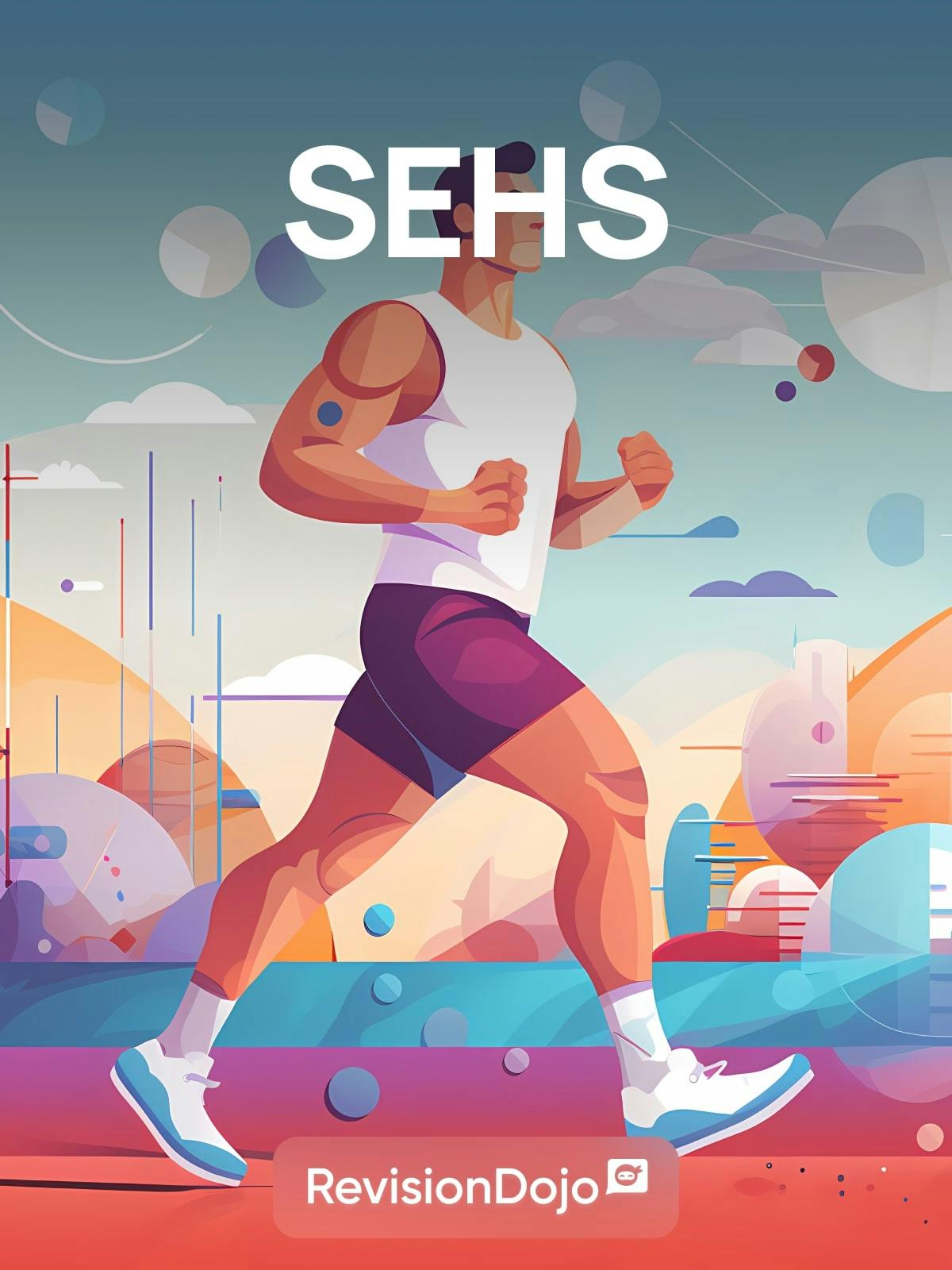
- IB
- Exercise Physiology
Exercise Physiology
Introduction
Exercise Physiology is a fundamental component of the Sports, Exercise, and Health Science (SEHS) curriculum in the International Baccalaureate (IB) syllabus. This study note will delve into various topics, breaking down complex ideas into manageable sections for better understanding. We'll cover a range of subjects from cell biology to human physiology, ensuring to elaborate on each part with examples, tips, and common mistakes to avoid.
Cell Biology
Overview
Cell biology is the study of cells, their physiological properties, their structure, the organelles they contain, interactions with their environment, their life cycle, division, and death.
Key Concepts
- Cell Structure: Understanding the different parts of the cell (nucleus, mitochondria, ribosomes, etc.) and their functions.
- Cell Membrane: The semi-permeable membrane that surrounds the cell, controlling the movement of substances in and out.
- Cell Division: The process by which a cell divides into two new daughter cells (mitosis and meiosis).
Example
Example: The mitochondria are known as the powerhouses of the cell because they produce ATP through cellular respiration.

Tip
Remember the acronym "MR. H. GREN" to recall the characteristics of living organisms: Metabolism, Reproduction, Homeostasis, Growth, Response, Excretion, and Nutrition.

Molecular Biology
Overview
Molecular biology focuses on the molecular basis of biological activity, including interactions between different systems of a cell, including the interrelationship of DNA, RNA, and protein synthesis.
Key Concepts
- DNA Structure: Double helix structure, base pairing (A-T, C-G).
- Transcription and Translation: Processes by which genetic information is copied from DNA to RNA and then used to synthesize proteins.
- Enzymes: Biological catalysts that speed up chemical reactions in the body.
Common Mistake
A common misconception is that DNA is directly involved in protein synthesis. In reality, DNA is transcribed into mRNA, which is then translated into proteins.

Genetics
Overview
Genetics is the study of heredity and the variation of inherited characteristics.
Key Concepts
- Genes and Alleles: Basic units of heredity, and different forms of a gene.
- Mendelian Genetics: Principles of inheritance (dominant and recessive traits).
- Genetic Disorders: Conditions caused by abnormalities in the genome.
Note
Understanding Punnett squares can be very helpful in predicting the outcome of genetic crosses.

Ecology
Overview
Ecology is the study of interactions among organisms and their environment.
Key Concepts
- Ecosystems: Communities of living organisms and their physical environment.
- Food Chains and Webs: Representation of energy flow in an ecosystem.
- Biogeochemical Cycles: The flow of chemical elements between living organisms and the environment (carbon, nitrogen cycles).
Example
Example: In a food chain, grass (producer) is eaten by a rabbit (primary consumer), which is then eaten by a fox (secondary consumer).

Evolution and Biodiversity
Overview
Evolution is the process by which different kinds of living organisms are thought to have developed and diversified from earlier forms. Biodiversity refers to the variety and variability of life on Earth.
Key Concepts
- Natural Selection: Mechanism of evolution proposed by Charles Darwin.
- Speciation: The formation of new and distinct species in the course of evolution.
- Biodiversity: The variety of life in the world or in a particular habitat.
Human Physiology
Overview
Human physiology is the science of the mechanical, physical, and biochemical functions of humans.
Key Concepts
6.1 Digestion & Absorption
- Digestive System: Organs involved in the breakdown of food.
- Enzymes in Digestion: Role of amylase, protease, and lipase.
- Absorption: Nutrient uptake by the intestines.
6.2 The Blood System
6.2.1 The Blood System: History
- Historical Figures: Contributions of William Harvey and others.
6.2.2 The Blood System: Vessels
- Arteries, Veins, and Capillaries: Structure and function.
6.2.3 The Blood System: Double Circulation
- Pulmonary and Systemic Circuits: Pathways of blood flow.
6.2.4 The Blood System: Cardiac Cycle
- Phases of the Cardiac Cycle: Systole and diastole.
6.2.5 The Heart Rate
- Regulation: Factors affecting heart rate (nervous and hormonal control).
6.2.6 Skills: The Blood System
- Practical Skills: Measuring blood pressure and heart rate.
6.3 Defence Against Infectious Disease
6.3.1 Skin
- Barrier Function: Role of skin in preventing infection.
6.3.2 Blood Clotting
- Mechanism: Process of coagulation.
6.3.3 White Blood Cells
- Types and Functions: Role in the immune response.
6.3.4 Antibiotics
- Mechanism of Action: How antibiotics work.
6.3.5 Antibiotic Resistance
- Causes and Consequences: Impact on public health.
6.4 Gas Exchange
6.4.1 Ventilation: Function & Structures
- Respiratory System: Organs involved in breathing.
6.4.2 Ventilation: Mechanism
- Mechanics of Breathing: Inhalation and exhalation.
6.4.3 Lung Diseases
- Common Conditions: Asthma, bronchitis, emphysema.
6.4.4 Skills: Monitoring Ventilation
- Practical Skills: Measuring lung capacity and ventilation rates.
6.5 Neurones & Synapses
- Structure and Function: How neurons transmit signals.
- Synaptic Transmission: Role of neurotransmitters.
6.6 Hormones, Homeostasis & Reproduction
6.6.1 Hormones
- Endocrine System: Hormone-producing glands.
6.6.2 Hormones Continued
- Specific Hormones: Insulin, glucagon, adrenaline.
6.6.3 Reproduction: Background
- Reproductive Systems: Male and female anatomy.
6.6.4 Reproduction: Sex Determination in Males
- Mechanism: Role of the Y chromosome.
6.6.5 Reproduction: Sex Determination in Females
- Mechanism: Role of the X chromosome.
6.6.6 Skills: Reproduction Diagrams
- Practical Skills: Drawing and labeling reproductive organs.
Higher Level Topics (HL ONLY)
7. Nucleic Acids (HL ONLY)
- Advanced DNA/RNA Structure: Detailed molecular biology.
8. Metabolism, Cell Respiration & Photosynthesis (HL ONLY)
- Metabolic Pathways: Detailed biochemical processes.
9. Plant Biology (HL ONLY)
- Plant Physiology: Photosynthesis, transpiration.
10. Genetics & Evolution (HL ONLY)
- Advanced Genetics: In-depth study of genetic principles.
11. Animal Physiology (HL ONLY)
- Advanced Animal Physiology: Detailed study of bodily functions.
Conclusion
This comprehensive study note covers the essential topics in Exercise Physiology as outlined in the IB SEHS syllabus. Understanding these concepts will provide a solid foundation for further study and application in sports, exercise, and health sciences.